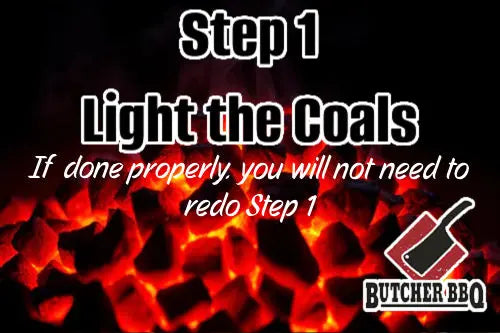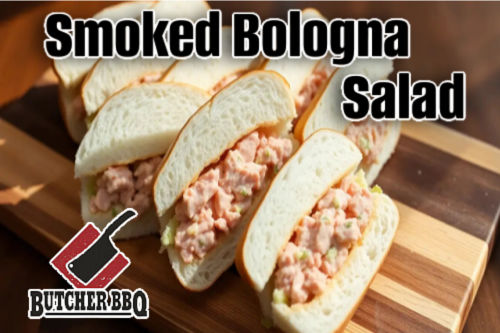
Mastering the Art of Lighting Charcoal: A Guide for Grilling Perfection
Lighting charcoal may seem like a simple task, but it's an essential skill for any aspiring grill master. Whether you're hosting a backyard BBQ or preparing for a competitive cook-off, getting your charcoal lit and ready to go is the first step to achieving that perfect smoky flavor and sear on your meats. In this blog post, we'll dive into the art of lighting charcoal, exploring the different methods, essential tools, and safety tips to ensure your grilling experience is a success.
Choosing the Right Charcoal
We covered this in a previous blog On How to Choose the Right Charcoal. Before we dive into the lighting process, it's important to understand the different types of charcoal and how they can impact your grilling experience. There are two main categories of charcoal: lump charcoal and briquettes.
Lump charcoal is made from hardwood that has been burned and carbonized, resulting in a natural, unprocessed product. Lump charcoal tends to burn hotter and cleaner, with less ash and a more authentic wood-fired flavor. Briquettes, on the other hand, are made from a combination of wood, coal, and other additives, which can produce a more consistent and predictable burn.
When choosing your charcoal, consider the type of cooking you'll be doing. Lump charcoal is often preferred for high-heat searing and direct grilling, while briquettes may be better suited for longer, slower cooking methods like smoking or indirect grilling.
Essential Tools for Lighting Charcoal
To ensure a successful charcoal lighting experience, you'll need a few essential tools in your grilling arsenal:
-
Chimney Starter: A chimney starter is a cylindrical device that uses the power of convection to quickly and evenly light your charcoal. Simply place the charcoal in the top chamber, add a few lighter cubes or crumpled newspaper at the bottom, and the chimney starter will do the rest.
-
Lighter Cubes or Newspaper: These are the fuel sources that will help ignite your charcoal. Lighter cubes are a convenient option, while crumpled newspaper can also work in a pinch.
-
Long-Handled Lighter or Matches: You'll need a reliable source of flame to light your starter or pyramid. A long-handled lighter or a box of matches can be invaluable for reaching into the grill.
The Chimney Starter Method
The chimney starter method is one of the most popular and efficient ways to light charcoal. Here's how it works:
- Place the chimney starter on a heat-resistant surface, such as a grill grate or a concrete patio.
- Fill the top chamber with your desired amount of charcoal.
- Place a few lighter cubes or crumpled newspaper in the bottom chamber of the chimney starter.
- Light the lighter cubes or newspaper, and allow the charcoal to fully ignite, which can take 15-20 minutes.
- Once the charcoal is glowing red and covered in a light gray ash, it's ready to be poured into your grill or smoker.
The chimney starter method is efficient, easy to use, and eliminates the need for lighter fluid, which can impart an undesirable flavor to your food.
The Pyramid Method
Another popular charcoal lighting technique is the pyramid method. This approach involves building a small, tiered pyramid of charcoal and then igniting it from the bottom.
- Start by arranging a small amount of charcoal in the center of your grill or smoker, creating a circular base.
- Build up the charcoal in a pyramid shape, with the pieces stacked in a criss-cross pattern to allow for airflow.
- Light the charcoal at the base of the pyramid, using a long-handled lighter or matches.
- Allow the charcoal to fully ignite, which can take 20-30 minutes, until the coals are glowing red and covered in a light gray ash.
The pyramid method can be a bit more time-consuming than the chimney starter, but it can be a great option for larger grills or when you need to light a significant amount of charcoal.
Alternative Lighting Methods
While the chimney starter and pyramid methods are the most common and recommended ways to light charcoal, there are a few other options to consider:
-
Electric Charcoal Starter: An electric charcoal starter is a device that heats up a metal coil, which in turn ignites the charcoal. This method is convenient and doesn't require any lighter fluid or matches, but it can be slower than the other methods.
-
Lighter Fluid: Using lighter fluid is a quick and easy way to light charcoal, but it's important to use it with caution. Lighter fluid can impart an undesirable flavor to your food, and it's important to allow the fluid to fully burn off before adding your food to the grill.
Safety Tips and Precautions
Lighting charcoal can be a fun and rewarding experience, but it's important to prioritize safety. Here are a few tips to keep in mind:
- Always light charcoal in a well-ventilated area, away from any flammable materials or structures.
- Never use lighter fluid or other accelerants indoors or in enclosed spaces.
- Keep a fire extinguisher or a bucket of sand nearby in case of any flare-ups.
- Wear heat-resistant gloves when handling hot charcoal or grill grates.
- Dispose of used charcoal properly, allowing it to fully cool before discarding.
Knowing When Your Charcoal is Ready
Determining when your charcoal is ready for cooking can take some practice, but there are a few telltale signs to look for:
- The charcoal should be covered in a light gray ash, indicating that it has fully ignited.
- The coals should be glowing red and evenly distributed throughout the grill or smoker.
- You should be able to hold your hand about 6 inches above the grill grate for 2-3 seconds before feeling significant heat.
Once your charcoal is ready, you can begin cooking your favorite grilled or smoked dishes, confident that you've mastered the art of lighting the perfect fire.
Troubleshooting Common Issues
Even the most experienced grill masters can encounter the occasional hiccup when lighting charcoal. Here are a few common issues and how to address them:
- Charcoal Won't Light: If your charcoal isn't igniting, check that you have enough lighter cubes or newspaper, and ensure that the airflow in your chimney starter or grill is not obstructed.
- Uneven Heating: If your charcoal is burning unevenly, try rearranging the coals or adding more to create a more even distribution of heat.
- Excessive Smoke: If your charcoal is producing too much smoke, it could be a sign that the coals are not fully ignited. Allow more time for the charcoal to fully burn before adding your food.
By understanding these common issues and how to troubleshoot them, you'll be well on your way to becoming a charcoal lighting pro.
Conclusion
Lighting charcoal may seem like a simple task, but it's an essential skill that can make or break your grilling experience. By understanding the different methods, choosing the right charcoal, and following proper safety protocols, you'll be able to consistently achieve that perfect sear and smoky flavor in all your grilled and smoked dishes.
So, fire up your chimney starter, build that pyramid, and get ready to impress your friends and family with your newfound charcoal lighting expertise. Happy grilling!




